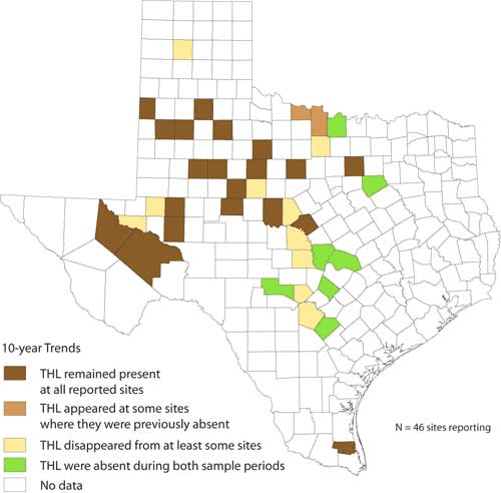
The Texas Horned Lizard (Phrynosoma cornutum) is the largest and most widely distributed of the roughly 14 species of horned lizards in the western United State and Mexico. The average Texas horned lizard is 69 mm in snout-vent length, but the upper boundary for males is 94 mm and for females it is 114 mm. Although its coloration generally serves as camouflage against predation, when threatened by a predator, a horned lizard puffs up and appears very fat, which causes its body scales to protrude, making it difficult to swallow. The Texas horned lizard also has the ability to squirt an aimed stream of blood from the corners of the eyes and sometimes from its mouth for a distance up to 1.5 m. This not only confuses would-be predators, but also the blood is mixed with a chemical that is foul-tasting to canine predators such as wolves, coyotes, and domestic dogs. This novel behavior is observed to be very effective in defense.

This species is vulnerable to environmental changes, especially the loss of harvester ants which comprise up to 69% of their diet. However, the abundance of harvester ants has decreased drastically as a result of introduced fire ants, which are thought to out compete native harvester ants for food and space. The widespread use of insecticides and habitat destruction have also contributed to declines.

REU students will:
- conduct a habitat assessment to determine potential relocation sites at TBFS
- create a population recovery plan for relocated individuals
- generate models of population growth based on mark-recapture data